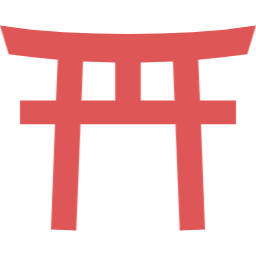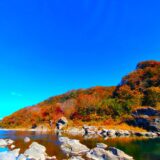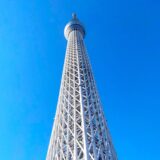【Hijiri Shrine summary】
Hijiri Shrine was founded in 708. In the same year, natural copper was discovered at the shrine, and it is said to have been the occasion for the Wado Kaihin coinage and the Wadokaichin coinage. When the discovered copper was presented to the Imperial Court of the time, Emperor Ganmei was so pleased that he changed the year to “Wado”. The coin issued that year was Japan’s first circulating coin, the “Wadokaichin,” which can be found in textbooks. Known as the “God of Money” by the locals, the temple is visited by many people as a god of good fortune, praying for good luck in money, lottery tickets, and business.
![Hijiri Shrine [Saitama] DSC 1457 1024x768 - Hijiri Shrine [Saitama]](https://japan-shrine.info/wp-content/uploads/DSC_1457-1024x768.jpg)
The four deities are Kanayamahiko-no-mikoto, Kunitokotachi-no-mikoto, Amaterasu Oomikami (Amaterasu), Kannihonibanyohiko-no-mikoto (Emperor Jinmu), and Motomeikin-mikoto. A stone monument in the precincts of the shrine says, “Our company enshrines this historically historic ‘natural copper as the main deity’ and further enshrines Kanayamahiko-no-mikoto and Motomeikin-mikoto together, which suggests that Kanayamahiko-no-mikoto was originally enshrined as the deity of the natural copper.
The temple is said to contain two large and two small Wado rocks, Wadokaichin coins, and a pair of male and female centipedes made of Wado copper, which are said to have been given to Emperor Genmei as treasures.
![Hijiri Shrine [Saitama] DSC 1465 1024x768 - Hijiri Shrine [Saitama]](https://japan-shrine.info/wp-content/uploads/DSC_1465-1024x768.jpg)
【Hijiri Shrine】
![Hijiri Shrine [Saitama] DSC 1474 1024x768 - Hijiri Shrine [Saitama]](https://japan-shrine.info/wp-content/uploads/DSC_1474-1024x768.jpg)
The entire shrine, including the approach to the shrine, is small in size but very beautifully maintained. The shrine building has been rebuilt five times, and the current building is considered a tangible cultural property of Chichibu City.
![Hijiri Shrine [Saitama] DSC 1467 1024x768 - Hijiri Shrine [Saitama]](https://japan-shrine.info/wp-content/uploads/DSC_1467-1024x768.jpg)
The main shrine and the hall of worship are small in size but have a stately appearance. In the shrine pavilion, there is a huge Wadokaichin, which is made of wood and very well made.
【Wado Ruins】
![Hijiri Shrine [Saitama] DSC 1478 1024x768 - Hijiri Shrine [Saitama]](https://japan-shrine.info/wp-content/uploads/DSC_1478-1024x768.jpg)
About a 10-minute walk from the Holy Shrine is the Wado Ruins, where natural copper was discovered and mined.
![Hijiri Shrine [Saitama] DSC 1481 1024x768 - Hijiri Shrine [Saitama]](https://japan-shrine.info/wp-content/uploads/DSC_1481-1024x768.jpg)
A 5-meter-high monument of “Wadokaichin” stands along a nature-rich path. Currently, the route to view the ruins from above seems to be closed due to falling rocks.
【Hijiri Shrine GOSHUIN】
![Hijiri Shrine [Saitama] 2024 11 24 16 49 Office Lens 684x1024 - Hijiri Shrine [Saitama]](https://japan-shrine.info/wp-content/uploads/2024_11_24-16_49-Office-Lens-684x1024.jpg)
【Hijiri Shrine Nearby attractions】
Lunar Stone Maple Park, Nagatoro, Chichibu
【Hijiri Shrine Access】
Manager’s Comments
It is a small shrine in the countryside, but I thought there were relatively many worshippers. Since the shrine is associated with “money,” it seems to be associated with “luck in money” as a matter of course nowadays. I heard that prayers for lottery tickets are also offered, but I don’t think that is the original meaning of “money luck”…….
2191 Kurotani, Chichibu-shi, Saitama 368-0001
※Free parking available
 Tour of Japanese shrines and temples
Tour of Japanese shrines and temples 

![Hijiri Shrine [Saitama] DSC 1493 520x300 - Hijiri Shrine [Saitama]](https://japan-shrine.info/wp-content/uploads/DSC_1493-520x300.jpg)
![Hijiri Shrine [Saitama] DSC 1493 150x150 - Hijiri Shrine [Saitama]](https://japan-shrine.info/wp-content/uploads/DSC_1493-150x150.jpg)
![Hijiri Shrine [Saitama] DSC 1588 2 150x150 - Hijiri Shrine [Saitama]](https://japan-shrine.info/wp-content/uploads/DSC_1588_2-150x150.jpg)
![Hijiri Shrine [Saitama] DSC 0082 1 150x150 - Hijiri Shrine [Saitama]](https://japan-shrine.info/wp-content/uploads/DSC_0082-1-150x150.jpg)
![Hijiri Shrine [Saitama] DSC 0094 150x150 - Hijiri Shrine [Saitama]](https://japan-shrine.info/wp-content/uploads/DSC_0094-150x150.jpg)

